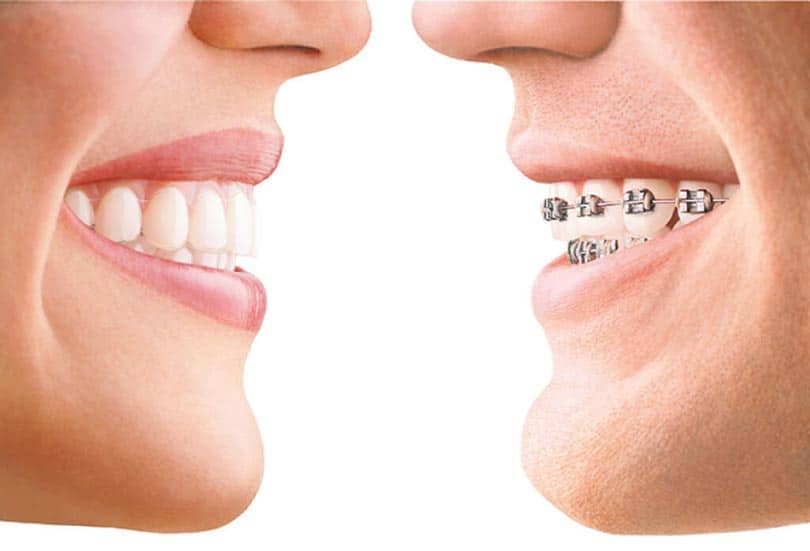1. Proper chewing
2. For easy maintenance
3. For a beautiful smile
Inappropriate alignment of teeth makes teeth brushing difficult resulting in tooth decay and gum inflammation. Uneven teeth are prone to food lodgement, Dental caries, Gingivitis, TMJ pain, Uneven wear.

How to align teeth? There are two methods

The dentist will bond a bracket on each tooth, then place a thin, flexible arch wire over the brackets. Tiny elastic bands called modules keep the wire firmly in place. They require periodic tightening every month so steady pressure can gradually straighten your teeth and align them in the desired position. There are different type of Brackets: Metal brackets, ceramic basic brackets, ceramic premium brackets, crystal brackets and self ligating brackets.
When you think of braces, this is what you imagine – Metal brackets, metal wire. They are silver and are absolutely visible when you smile. They are budget friendly. Almost all braces take upto 12-24 months of treatment depending on the severity of malocclusion


Ceramic brackets are made of composite material and come in various levels of transparency. They mimic the colour of the natural tooth. Hence they are not that easily spotted. Basic and premium depends on the level of transparency.
They are similar to glass. Completely clear and transparent. Highest level of transparency. Difficult to notice its presence. Best aesthetic result.


Cryptro connects banks, payment providers, digital asset exchanges and corporates via Cryptro to provide one frictionless experience to send money globally.
General guidelines for people wearing braces:
Clear aligners are sets of transparent, thin, plastic trays that are customized to fit your teeth and sequentially apply the pressure required to move the teeth. Typically each aligner is worn for minimum 22 hours a day for 2 weeks. This moves the teeth a fraction of a millimeter at a time. The number of aligners, treatment time and cost varies based on the complexity of the orthodontic issues.


Your dentist knows which is best for you. After explaining the pros and cons, it’s up to you to choose which is better for you. Generally clear aligners give precise results for mild to moderate cases and traditional braces are suited for extremely complex cases.
Difference between traditional brackets and clear aligners
| Traditional brackets | Clear Aligners | |
| 1 | visible | invisible |
| 2 | Not removable | Removable |
| 3 | Difficulty maintain oral hygiene | Easy to maintain oral hygiene |
| 4 | Discomfort | Comfortable and convenient |
| 5 | Lengthy appointments | Minimal appointments |
| 6 | Frequent visits required | Very few visits required. |
| 7 | Result can be visualized only after treatment ends | Result can be visualized before the treatment starts |